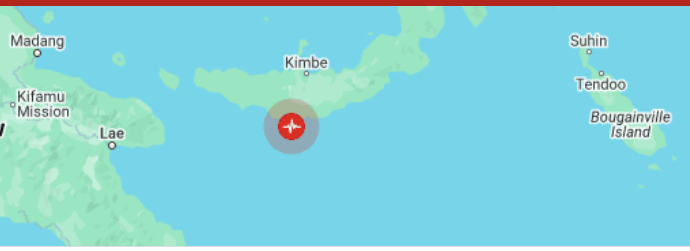A 4.5-magnitude earthquake struck the Bismarck Sea near Kimbe, Papua New Guinea, on 1 April, adding to the series of recent seismic events in the Asia-Pacific region. The quake’s epicenter was 65 km northwest of Kimbe, West New Britain Province, but no major damage or casualties have been reported so far.
While Papua New Guinea experienced mild tremors, Myanmar is still struggling to recover from a catastrophic 7.7-magnitude earthquake that struck central Myanmar on 28 March. With the epicenter near Mandalay, the disaster has resulted in over 2,000 deaths, 3,900 injuries, and 270 people still missing. Buildings, including hospitals and schools, have collapsed, and emergency response efforts are severely hampered by damaged infrastructure, power outages, and communication failures. The situation is further worsened by Myanmar’s ongoing civil conflict, making it difficult to coordinate relief efforts.
Rescue workers are still pulling survivors from the rubble, while mass graves are being dug to accommodate the rising number of victims. International humanitarian groups have called for urgent assistance, but Myanmar’s political instability has slowed aid delivery. Sri Lanka, among other nations, has pledged support, with Health Minister Nalinda Jayatissa announcing that a medical team is ready to be deployed once Myanmar grants clearance.
In addition to the earthquakes in Papua New Guinea and Myanmar, the Asia-Pacific region has seen other major seismic events in recent months. On 1 January, a 7.6-magnitude earthquake struck the Noto Peninsula in Japan, causing widespread damage and casualties. On 22 January, a 7.1-magnitude earthquake hit the China-Kyrgyzstan border, leading to injuries and structural damage in both countries.




